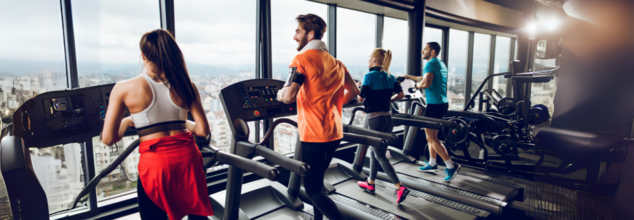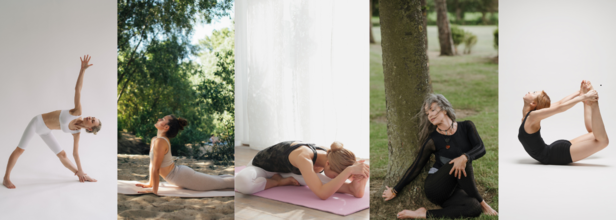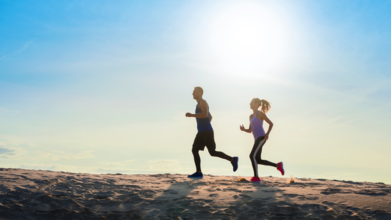- Health Conditions A-Z
- Health & Wellness
- Nutrition
- Fitness
- Health News
- Ayurveda
- Videos
- Medicine A-Z
- Parenting
- Web Stories
Exercise Proven ‘Better Than Drugs’ To Prevent Colon Cancer Recurrence, Study Trial Shows

Credits: Canva
A new and breakthrough international study trial has found that exercise, when added to the recovery regimen for colon cancer patients, can dramatically enhance survival rates and lower the risk of cancer recurrence—performing better than most conventional drug therapies. The findings, delivered at the American Society of Clinical Oncology (ASCO) annual meeting and published in the highly respected New England Journal of Medicine, herald a possible paradigm shift in supporting cancer survivors after treatment on a global scale.
For decades, medical professionals have advocated for healthy lifestyles as a preventive measure against cancer development. However, concrete evidence demonstrating the impact of exercise after a cancer diagnosis—especially as a tool to prevent recurrence or new cancers—has been scarce. Until now.
This breakthrough trial, the first of its type, followed close to 900 patients with colon cancer from nations such as the US, UK, Canada, Australia, France, and Israel. Participants had all undergone chemotherapy for curable colon cancer. They were either assigned to a guided exercise program with coaching assistance or a control group receiving only information about nutrition and fitness.
The exercise group also had a personal coach who worked closely with them, meeting biweekly for the initial year and monthly for the next two years, who provided them with customized support to boost their physical activity. This way, there was accountability, motivation, and progress—so often lacking in generic exercise tips.
The control group, on the other hand, got an educational manual advocating general health and diet but without personalized advice or continued support.
Eight years later, the findings were shocking. The exercise group had a 28% reduction in recurrence of cancer and 37% reduction in cause-specific deaths versus the control group. Such survival advantages came with elevated physical activity levels and increased quality of life.
The results surpassed expectations, according to Dr. Christopher Booth, co-author of the report and a cancer specialist at Kingston Health Sciences Centre. "We were astounded," he said. The survival advantages of exercise are comparable, and in many cases, surpass, those provided by many medications now being given to survivors of colon cancer. Furthermore, exercise programs are relatively inexpensive and have much lower side effects.
Dr. Booth pointed out the cost-effectiveness of this intervention: "Exercise programs can be provided for several thousand dollars per patient, an amazingly reasonable intervention that will make individuals feel better, have reduced cancer recurrences, and live longer."
The findings of the trial indicate that cancer centers and payers ought to take seriously integrating exercise coaching into routine survivorship care plans.
How Exercise Works Against Cancer?
Though clinical benefits are evident, scientists continue to examine the underlying biological mechanisms for exercise's protective effects. Blood draws from volunteers are being tested to reveal how physical activity affects cancer prevention.
Potential hypotheses include enhanced insulin metabolism, stronger immune function, and decreases in inflammation—all elements known to affect tumor development and metastasis.
Dr. Kerry Courneya, a co-author and University of Alberta exercise oncology specialist, emphasizes that lasting behavior change among patients is important if long-term benefits are to be achieved. Coaching social support, pleasure from activity such as walking and listening to music, and confidence in the benefits of exercise assist patients in sustaining these healthy behaviors.
One of the participants, Swain-Collins, who had finished the coaching program, still stays physically active by walking in the countryside around her house. She keeps herself motivated by listening to music and likes the process—a central aspect in maintaining physical activity independent of clinical supervision.
"This research demonstrates it's never too late to get moving even after a diagnosis or if patients have already begun treatment," Courneya said, making clear that taking up physical activity after diagnosis can continue to provide substantial health gains.
The trial results come in the face of a disturbing global trend: increasing incidence of colon cancer among younger adults in their 20s, 30s, and 40s—a group traditionally less prone to this disease.
In America, new cases of colon cancer total about 142,000 per year, while in the UK, about 32,000 occur yearly. Colon cancer is still the third most frequent cancer in the UK and one of the top reasons for deaths due to cancer worldwide.
While the majority of cases occur in people over 50, diagnoses in younger adults have surged over the past three decades, confounding medical experts.
Possible Causes of Early-Onset Colon Cancer
Researchers have proposed multiple potential triggers for this unsettling rise. Obesity, widespread antibiotic use, exposure to mobile phone radiation, and even microplastic contamination in drinking water have all been suggested as contributing factors.
Yet, a mounting body of evidence points to diet, specifically the higher intake of ultra-processed foods, as a primary suspect. These foods are rich in sugars, unhealthy fats, and additives, which can increase inflammation and imbalances of the gut microbiome—both associated with cancer risk.
Identifying Colon Cancer Symptoms Early
Early detection continues to be key to enhancing colon cancer survival. Signs to monitor include alteration of bowel habits like new or ongoing diarrhea or constipation, abnormal urgency or frequency in bowel movements, and blood in the stool.
Other symptoms can be stomach pain, bloating, feeling of a lump in the abdomen, unintentional weight loss, and ongoing fatigue. Everyone exhibiting these symptoms needs to get medical attention immediately.
This global trial establishes a new standard of care for cancer survivorship, highlighting exercise as not only a way of life but also a powerful medical treatment. With increasing evidence on its benefits, healthcare systems globally are challenged to reassess how they care for patients post-treatment.
Daily Yoga Could Cut Diabetes By 40%, Says New Study

Credits: Canva
Yoga might be more than a wellness trend or a stress-busting tool. A new study titled “Yoga and Prevention of Type 2 Diabetes”, published by the Research Society for the Study of Diabetes in India (RSSDI), has found that regular yoga practice can reduce the risk of developing type 2 diabetes by up to 40%—especially in individuals already predisposed due to factors such as obesity, family history, or a sedentary lifestyle.
The findings were recently presented to the Union Health Minister and are among the first to explore yoga’s preventive role in diabetes, moving beyond earlier research that largely focused on managing blood sugar in people who already have the disease. The study was led by renowned endocrinologist Dr SV Madhu, whose team focused on high-risk groups to examine yoga’s long-term effects on metabolic health.
Can Yoga Prevent Diabetes?
While previous studies examined how yoga helped manage diabetes, this research pivots to a vital question: Can yoga help prevent it altogether? The answer appears promising.
The researchers assessed participants who were at high risk for developing type 2 diabetes—those with insulin resistance, a family history of diabetes, or unhealthy lifestyle indicators like poor diet and lack of physical activity. Over the course of the study, individuals who practiced yoga consistently showed noticeable improvements in:
- Fasting blood sugar levels
- Insulin sensitivity
- Waist circumference and BMI
- Stress and cortisol levels
- Overall metabolic balance
The combined impact of movement, mindful breathing, and meditation, the study notes, contributes to a more regulated stress response system—a key factor in maintaining stable insulin and glucose levels.
How Does Yoga Help?
Yoga activates the parasympathetic nervous system, also known as the body’s "rest and digest" mode. This downregulates stress hormones like cortisol, which, when chronically high, are known to spike blood sugar and reduce insulin sensitivity.
Additionally, certain yoga poses stimulate abdominal organs such as the pancreas and liver, both central to metabolic regulation. Stretching, twisting, and deep breathing help improve digestion, circulation, and hormonal balance, all of which play a critical role in metabolic disease prevention.
5 Yoga Poses That May Support Diabetes Prevention
If you’re looking to incorporate yoga into your routine with prevention in mind, here are five asanas the study recommends:
Trikonasana (Triangle Pose):
This standing posture improves digestion and opens the body’s side lines. Its gentle twisting action massages the abdominal organs and supports better metabolism.
Bhujangasana (Cobra Pose):
A heart-opener and back-strengthener, this pose stretches the abdomen and stimulates the pancreas. It’s great for reducing spinal tension and post-meal sluggishness.
Paschimottanasana (Seated Forward Bend):
Though it looks simple, this calming pose eases stress and stimulates the internal organs. Over time, it may help improve insulin sensitivity.
Dhanurasana (Bow Pose):
In this energizing posture, lifting both upper and lower body activates core muscles and stimulates the pancreas. It also enhances circulation and is a great addition to morning routines.
Ardha Matsyendrasana (Half Spinal Twist):
This classic seated twist supports liver detoxification, improves digestion, and balances hormones—important factors in diabetes prevention.
Does Your Metabolism Really Slow Down With Age? Here Is The Truth

We have all heard the elders saying it is harder to lose weight after 40 because your metabolism slows down. But is that really the case, or are we blaming something that is not even responsible? Fitness expert Jaymie Moran took to Instagram to break down what actually happens as we age, and his take might surprise you.
Your Metabolism Does Not Suddenly Tank at 40
Referencing a major 2021 study led by Duke University researchers that tracked 6,400 people ranging from infants to 95-year-olds, Moran mentions the study’s striking discovery: metabolism stays remarkably stable between the ages of 20 and 60.
“There is no magical slowdown and no flip that gets switched as soon as you turn 40,” Moran states. So if that is the case, why does managing weight suddenly feel so much harder?
It is Not Your Metabolism; It is Your Life
“Well, you are probably not going to like the answer,” Moran warns, “but we are here to cut the BS.” According to him, it is not about your metabolism at all; “It is your life.”
Moran explains how our lifestyle in our 40s looks vastly different from our younger years. “You are sleeping one or two hours less than you did in your 20s. You are sitting at a desk for eight or nine hours a day. Your active hobbies have turned into running the kids round or scrolling on Instagram in bed.”
And the main issue? Stress. “You are stressed out, never feel like you have any time, and are grabbing convenient crap that you probably would not have touched a decade ago.”
Hormonal Issues Add to the Chaos
“And let us not forget about perimenopause knocking on the door,” Moran adds, “which does change how your body stores fat, especially around your midsection.”
He points out that night sweats wreak havoc on your sleep, which in turn “absolutely screw with your hunger and fullness hormones”. As your hormones shift, you end up “moving less because you are exhausted, and you are probably eating more.” According to Moran, that is why the scale creeps up, not because your metabolism has suddenly failed you.
Same Old Strategy, Different Body and Life
Moran says the real problem is trying to apply the same health and fitness approach from your 20s, even though everything about your life and body has changed. “You are still trying to follow the same approach that you used in your 20s, even though your body and your life are very different now.” However, he says that weight loss and getting your health in check is still completely possible.
Smarter Strategy for a Smarter Body
According to Moran, you just have to adjust your strategy. His recommendations are clear:
- “Prioritise protein and fibre to maintain your muscle and control hunger.”
- “Get seven to eight hours of quality sleep. Your hormones will thank you.”
- “If you struggle with night sweats or you get too hot, buy a cooling mattress. It will literally change your life.”
- “Strength train two to three times a week for 30 to 60 minutes. This is a non-negotiable if you want to age strong.”
- “Walk more. You have got to be doing at least 8,000 steps a day.”
If 8,000 sounds like a stretch, Moran has a simple plan: “If you are at 4,000 or 5,000, start adding 1,000 a month on until you get to 8,000 and just make it part of your daily routine.”
It is About More Than the Scale
Moran ends with a powerful reminder: “This is not just about the number on the scale. This is about your energy, your strength, your confidence, your independence, your self-esteem, and staying capable.”
6 Wrestling-Inspired Workouts That Build Strength and Stamina

If you were into Trump cards growing up, we get why wrestling holds a special place in your heart. It does not matter if you were actually wrestling with your friends, watching the pros throw down on screen, or signing up for every similar sport in school; wrestling was everywhere. And now, Hulk Hogan’s passing has come as a shock to many. The man who defined professional wrestling and became a full-blown pop culture icon in the 1980s reportedly died of cardiac arrest at the age of 71.
Confirming the news, the World Wrestling Federation (WWE) said they were deeply saddened to learn of the death of Hogan, real name Terry Bollea. From Donald Trump to Dwayne “The Rock” Johnson, tributes poured in on social media, honouring the WWE Hall of Famer. Hogan was a larger-than-life hero through the ’90s, and nothing brought more joy than those flashy WWE cards as a kid.
Beyond Hogan’s unbeatable charisma and how effortless he made the sport look, wrestling has always stood for strength, stamina, and power. It was never just about winning; it was about how massive and intimidating you looked doing it. And the bigger and more muscled up you were, the stronger you seemed. Or at least, that is what we grew up believing.
But you are not alone in thinking that. And real strength comes from real training. So wrestling may not be everyone’s cup of tea, but strength training is for everyone. Here are six exercises that channel the intensity of wrestling. Do them at home, at the gym, or wherever you feel most pumped.
1. Rope Slams
Rope slams build upper body strength, torch calories, and improve grip, something wrestlers swear by. Five minutes in, your arms will burn, your heart will race, and you will realise this is not just cardio.
2. Sandbag Carries
Wrestlers need raw power and real-world strength, not just pretty muscles. Carrying a sandbag across distances mimics holding and lifting a resisting opponent. It strengthens your back, core, arms, and legs, all while making you feel like a total tank.
3. Sled Pushes
Sled pushes mimic the kind of explosive force wrestlers use in takedowns. You are pushing weight while keeping low, just like you would drive into an opponent. Great for legs, lungs, and pure willpower. You will love how destroyed and strong you feel at the same time.
4. Grappling Drills
Whether it is rolling, clinching, or ground control, grappling builds real functional strength and serious stamina. These drills develop coordination, core power, and body awareness, basically your full-body IQ. Plus, they toughen your mind. Wrestlers do not just train to win; they train to outlast, and this is where it starts.
5. Bulgarian Split Squats
They challenge balance, coordination, and leg strength all at once. The deep stretch and burn translate to explosive takedowns and stronger stances. Hate them or love them, they deliver serious results, especially when your legs feel like jelly halfway through.
6. Battle Crawls (Low Crawls)
You are on the floor, elbows and knees digging in, dragging your body forward. This brutal crawl mimics wrestling scrambles and builds total-body resilience. It hits your core, shoulders, and quads like few other moves.
© 2024 Bennett, Coleman & Company Limited

